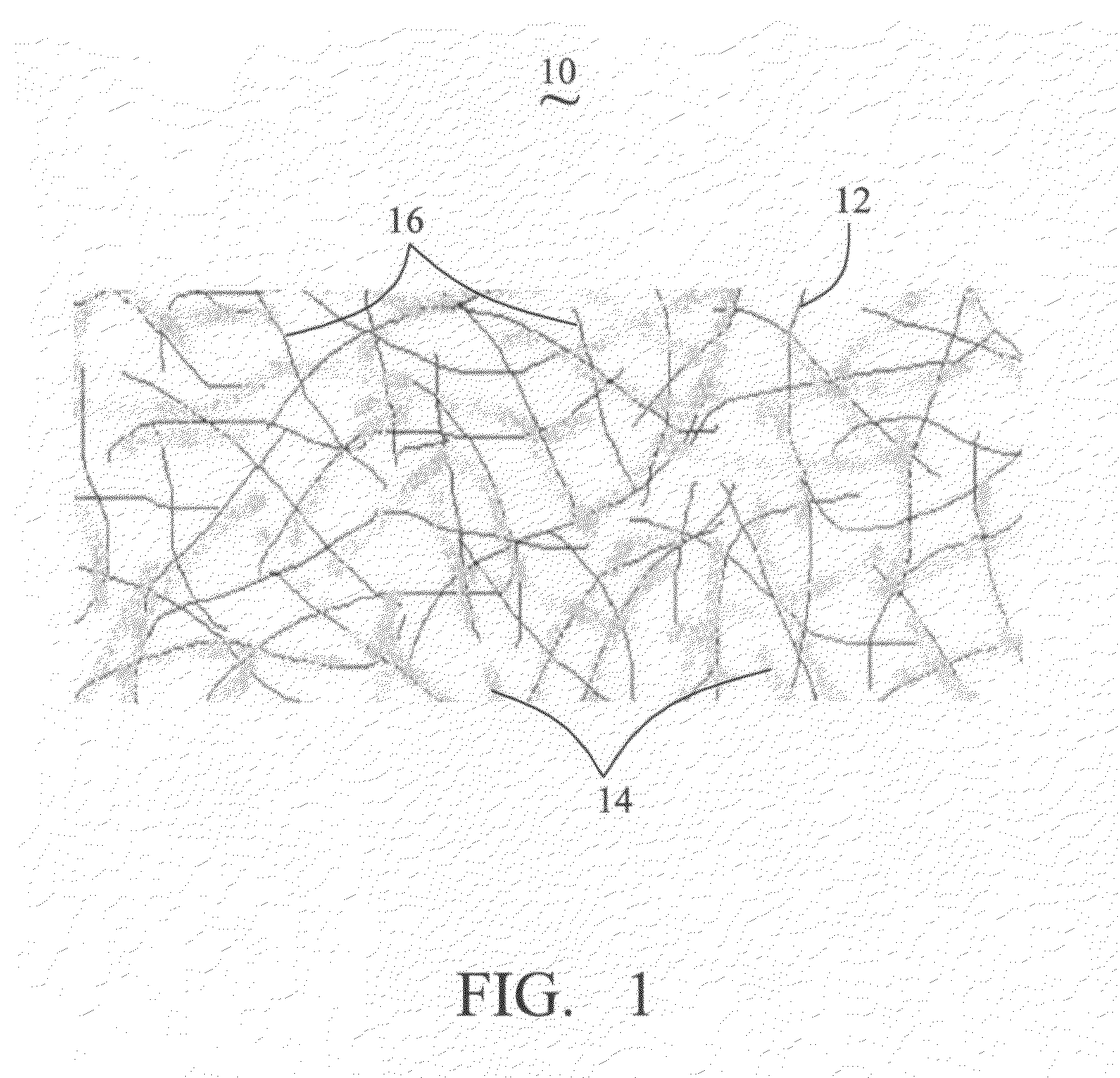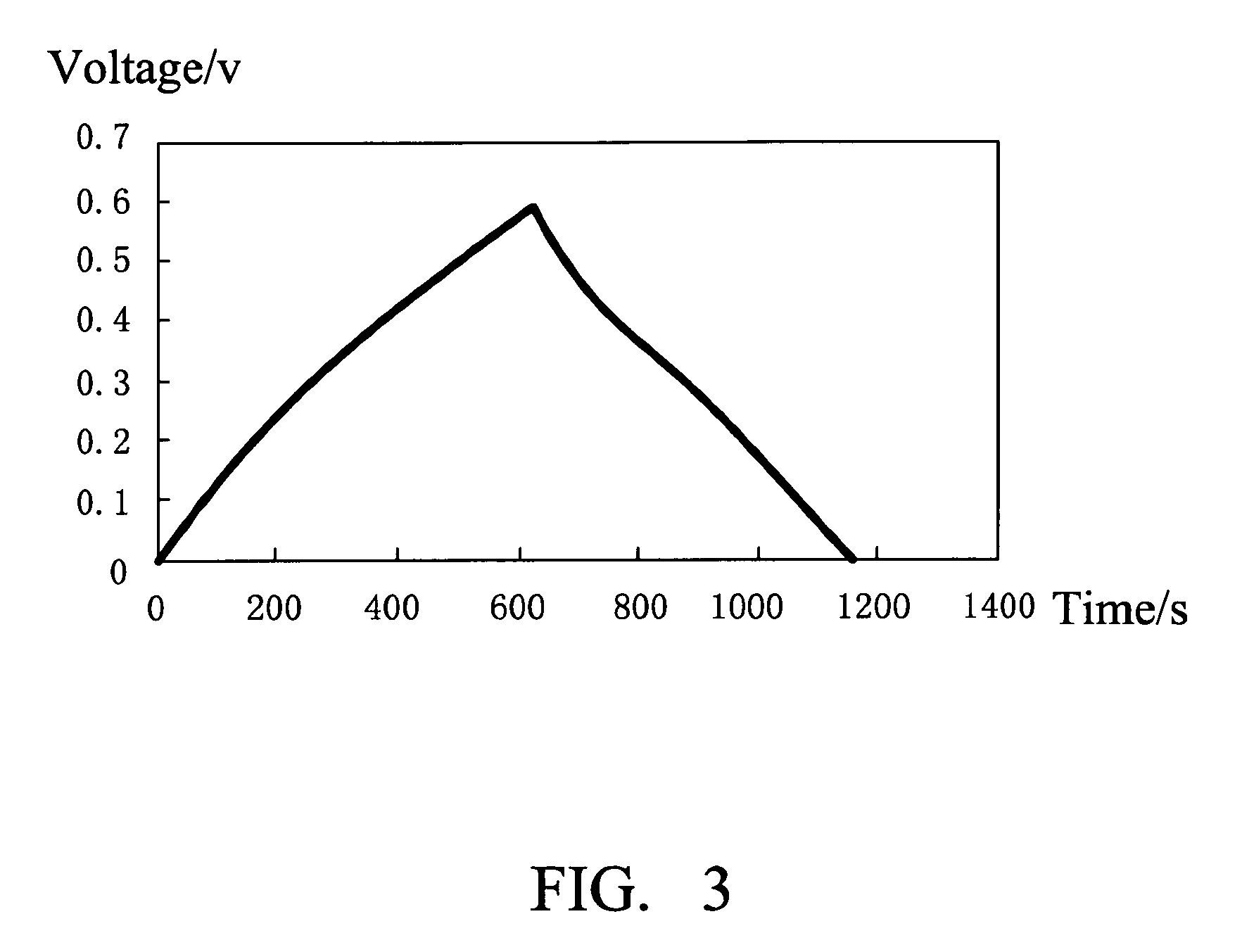Carbon nanotube-conductive polymer composite
a technology of conductive polymer and carbon nanotube, which is applied in the direction of non-metal conductors, cell components, conductors, etc., can solve the problems of reducing the resistance cnts cannot form a good electric conductive network, and the performance of the carbon nanotube-conductive polymer composite is negatively affected
- Summary
- Abstract
- Description
- Claims
- Application Information
AI Technical Summary
Benefits of technology
Problems solved by technology
Method used
Image
Examples
Embodiment Construction
[0017]Reference will now be made to the drawings to describe various embodiments of the present carbon nanotube-conductive polymer composite, in detail.
[0018]Referring to FIG. 1, a carbon nanotube-conductive polymer composite 10 includes a number of CNTs 12 and conductive polymer fibers 14. The CNTs are connected with each other to form a carbon nanotube network 16. The conductive polymer fibers 14 adhere to surfaces of the CNTs. The carbon nanotube network 16 forms a skeleton to which the conductive polymer fibers 14 adhere. The CNTs 12 and conductive polymer fibers 14 are uniformly distributed in the carbon nanotube-conductive polymer composite 10.
[0019]In the present embodiment, the CNTs 12 of the carbon nanotube network 16 are disordered or in isotropic arrangement. The disordered CNTs 12 are attracted and packed together closely by van Der Waals force, attaching to one another to form a uniformly distributed structure. The isotropic CNTs 12 are attracted by van Der Waals force ...
PUM
| Property | Measurement | Unit |
|---|---|---|
| diameters | aaaaa | aaaaa |
| diameters | aaaaa | aaaaa |
| diameter | aaaaa | aaaaa |
Abstract
Description
Claims
Application Information
 Login to View More
Login to View More - R&D
- Intellectual Property
- Life Sciences
- Materials
- Tech Scout
- Unparalleled Data Quality
- Higher Quality Content
- 60% Fewer Hallucinations
Browse by: Latest US Patents, China's latest patents, Technical Efficacy Thesaurus, Application Domain, Technology Topic, Popular Technical Reports.
© 2025 PatSnap. All rights reserved.Legal|Privacy policy|Modern Slavery Act Transparency Statement|Sitemap|About US| Contact US: help@patsnap.com



